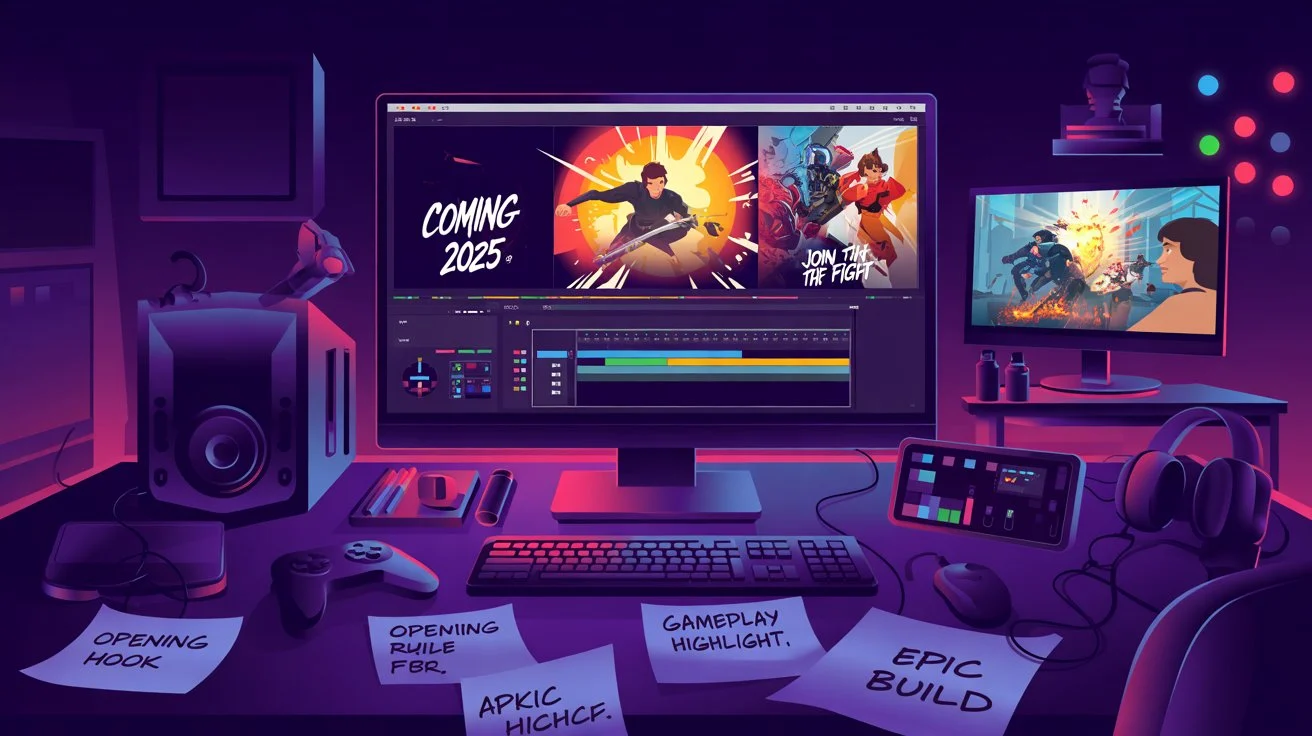Ever wondered why some game previews look like Hollywood blockbusters while others seem homemade? The difference often comes down to budget and production quality. Creating an eye-catching video game trailer requires careful planning and financial consideration.
For developers and studios planning their marketing strategy, understanding video game trailer pricing is key. A standard one-minute 2D preview starts around $5,000. Professional 3D productions begin at $20,000. The most impressive promotional videos can reach $50,000 for complex, high-quality productions.

I’ve spent years analyzing game trailer production costs across different studios and projects. What influences these prices? Everything from animation style and length to special effects and voice talent impacts your final investment. The good news? Options exist for every budget level.
Throughout this guide, I’ll break down all factors affecting trailer production costs and share insider tips to maximize your marketing dollars. Connect with experienced freelancers who can deliver stunning results without breaking your budget.
Table of Contents
Key Takeaways
- 2D game trailers typically start at $5,000 for one minute of content
- 3D trailers begin around $20,000 for the same length
- Professional productions range from $5,000 to $50,000 depending on complexity
- Animation style, length, and special effects significantly impact pricing
- Both indie developers and AAA studios can find appropriate options at various price points
- Strategic planning can help maximize marketing impact within your budget
The Power of Video Game Trailers in Today’s Market
Video game trailers are key players in the gaming world. They greatly influence what games people choose to play and how well they do in the market. I’ve seen how a great gaming trailer can turn an unknown game into a hit overnight. These trailers are the link between a game’s creators and its audience.
The digital world is packed with games, making it hard to stand out. A good video game trailer can grab attention quickly. It shows what makes your game special in just a few minutes, sometimes even seconds.
Why Game Trailers Matter for Success
Games with professional trailers do better than those without. The “5-Second Rule” is key: you have just five seconds to grab someone’s attention. Those first moments must be engaging and show what your game is about.
A great trailer does more than show gameplay. It tells a story that touches viewers’ emotions. Viral trailers all have this in common: they make you feel something, like excitement or curiosity.
The last seconds of a trailer are just as important. A clear call-to-action (CTA) tells viewers what to do next, like downloading or buying your game. Without it, even the most interested viewers might not take action.
Types of Gaming Trailers and Their Purposes
At different stages, your game needs different types of trailers. Knowing this helps you spend your marketing budget wisely.
| Trailer Type | Timing | Purpose | Typical Cost Range |
|---|---|---|---|
| Teaser Trailer | Early development | Build anticipation, establish aesthetic | $1,000-$15,000 |
| Announcement Trailer | Mid-development | Reveal core concept, generate buzz | $5,000-$30,000 |
| Gameplay Trailer | Late development | Showcase mechanics and features | $8,000-$40,000 |
| Launch Trailer | Release window | Drive immediate sales, create urgency | $10,000-$100,000+ |
Indie developers can achieve great things with smart trailer choices. The right gaming promo video is key to your marketing strategy at each stage.
How Much Does a Gaming Trailer Cost: Price Ranges Explained
The cost of a game trailer can vary a lot. It depends on the size of your project, from small indie games to big AAA titles. Knowing these price ranges is key to planning your marketing budget well. Let’s look at what you can expect to pay and what you’ll get at each level.
Indie Game Trailer Budgets ($1,000-$10,000)
Indie developers often spend between $1,000 and $10,000 on trailers. At the lower end, you get basic editing with simple effects and stock music. These trailers show off your game’s main features and what makes it special.
As you spend more, up to $10,000, you can add simple 2D animations, better graphics, and custom sounds. Many indie games have done well with trailers in this range. It shows you don’t need a lot of money to make something good.
Mid-Tier Game Trailer Costs ($10,000-$50,000)
The budget of $10,000 to $50,000 is a sweet spot for many. At this level, production quality goes up a lot. You get professional voiceovers, custom music, and advanced visual effects.
The Paladins “Go to War” trailer is a good example. It cost about $15,500. This money paid for storyboarding, character design, and more. The result was a trailer that really showed off the game’s appeal.
AAA Game Trailer Investments ($50,000-$1M+)
Big studios spend $50,000 to over $1 million on their trailers. These trailers are as good as Hollywood movies. The big budget means:
- Cinema-quality CGI and visual effects
- Original orchestral scores
- Celebrity voice talent
- Extended production timelines
These trailers are big marketing events. They get a lot of attention in gaming media and on social platforms. For AAA games, spending a lot on cinematic trailer budget often pays off.
Key Factors That Influence Your Gaming Trailer Budget
The cost of your video game trailer depends on certain production elements. Understanding these can help you spend wisely. This way, you can make your marketing budget go further without overspending.

Length and Complexity Considerations
When planning your trailer, remember that length and complexity affect the cost. A short teaser might be cheaper than a longer reveal trailer. But, complexity often matters more than length.
A simple trailer might cost less than a fancy one, even if it’s shorter. Each extra scene or effect adds to the cost. Developers often don’t realize how much these details add up.
Animation Style and Visual Quality
Your animation style is a big factor in budget. Here are some options:
- 2D animation: More affordable but can look great
- 3D animation: Needs more work like modeling and texturing
- In-game footage: Costs less but needs careful editing
- Hybrid approaches: Mix techniques for a unique look
Resolution also affects the cost. A 4K trailer needs more resources than HD. A producer once said:
“The difference between good and great in gaming trailers often comes down to those final polish passes—the lighting tweaks, particle effects, and camera movements that make viewers feel something.”
Custom Music and Sound Design
Audio is key in your trailer. Sound design and music can be 20-30% of the cost. It can make even simple trailers feel epic.
Voice Acting Expenses
Professional voice talent adds authenticity. Costs vary. New voices might charge $200-500, while famous ones can cost thousands.
Licensed Music vs. Original Compositions
Choosing music is a big decision:
Licensed tracks can be pricey, $1,000-$10,000 for rights. But they’re instantly recognizable.
Original music costs $250-$2,000, depending on the composer. It’s more affordable but can be tailored to your trailer’s feel.
Each element affects your trailer’s impact. Instead of cutting everywhere, focus on what’s most important for your game and audience.
Breaking Down the Production Process and Associated Costs
Every video game trailer starts with a detailed production journey. Each step has its own budget. Knowing these stages helps developers plan better and avoid surprises. Let’s look at what makes a trailer and the costs involved.
Pre-Production Planning and Conceptualization
The start of a trailer’s journey is pre-production, taking 20-30% of your budget. This phase includes scriptwriting ($200-$500), storyboarding ($200-$400 per minute), and concept art ($200-$1,000).
Spending well in pre-production can save money later. A good script and storyboard guide the trailer’s making.
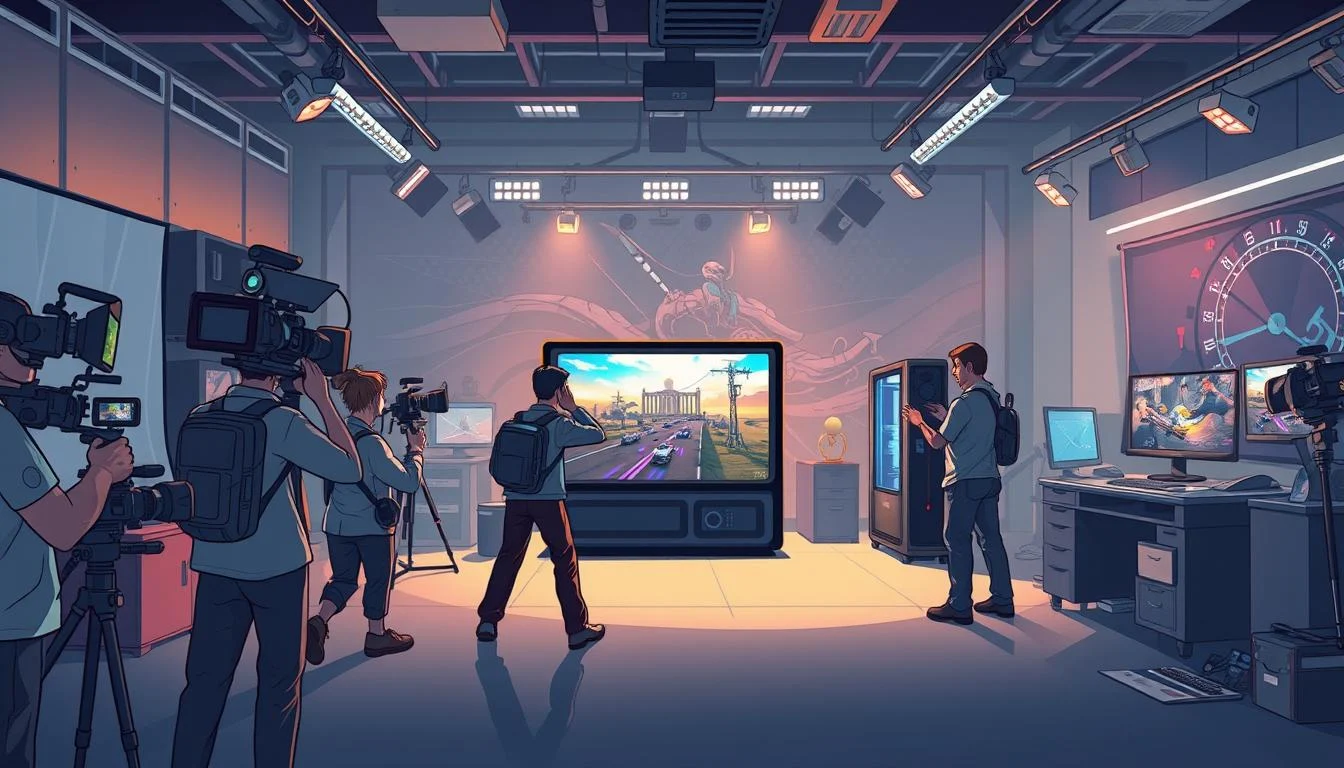
Production Phase Expenses
The production stage is the biggest part of your budget, at 40-50%. For 3D trailers, expect to spend on character design ($1,500-$10,000), environment creation ($500-$5,000), and animation ($1,000-$5,000 per minute).
2D trailers cost less. Character design is $300-$1,500, and animation is $500-$2,000 per minute. The quality you choose affects your costs and marketing goals.
Post-Production, Editing and Revisions
The last 20-30% of your budget goes to making your trailer perfect. This includes rendering ($200-$1,500 per minute for 3D), compositing and editing ($100-$500 per minute), music ($250-$2,000), and sound effects ($100-$300 per minute).
Many developers don’t plan for revisions, which can increase costs. Set aside part of your budget for changes.
Knowing the costs helps you plan better. This way, you can make a trailer that shows off your game’s best features.
Finding the Right Talent: Hiring Options for Your Trailer
Finding the right talent for your gaming trailer can be tough. But knowing your options is key to success. The quality of your trailer depends on who makes it. So, it’s smart to explore all your choices before deciding.

Working with Specialized Game Trailer Agencies
Specialized agencies are the top choice for gaming trailers. They charge between $5,000 and $50,000+ based on your project. You get a team that knows gaming and marketing well.
Companies like Prolific Studio offer full services from start to finish. They have the skills and knowledge to make your trailer stand out. When looking at agencies, check their past work, client feedback, and how they communicate.
- Thoroughly reviewing their portfolio of previous game trailers
- Reading client testimonials and reviews
- Assessing their communication style during initial consultations
- Comparing their timeline and budget requirements with your needs
Freelancer Marketplaces and Individual Creators
Freelancer marketplaces are great for saving money. You can find talented people for less than agency prices.This can save you 30-50% and get you quality work. Look for top freelancers on Fiverr.
Working with freelancers means managing different people for animation, sound, and editing. Quality can vary. So, spend time reviewing portfolios, checking feedback, and testing communication.
- Review detailed portfolios
- Check client feedback and ratings
- Test communication with small initial projects
- Clearly define deliverables and milestones
In-House Production Considerations
Doing your trailer in-house might seem cheap at first. But it’s not always the best choice. It works best if you already have the right team and tools.
- Equipment and software license costs
- Team expertise in trailer production
- Time taken away from making the game
- Quality expectations versus marketing goals
Outsourcing is often better for most studios. It brings new ideas, specialized skills, and flexibility. It also lets your team focus on making great games.
Your choice depends on your budget, time, and what you want your trailer to be. For big trailers like launch videos, agencies are usually the best. For updates or teasers, freelancers or in-house might be better.
Creating a Realistic Budget Plan for Your Gaming Trailer
A well-planned budget is key to your gaming trailer’s success. It guides how you use resources from start to finish. Many developers struggle with video game trailer budgets because they didn’t plan well. A good budget isn’t just about saving money. It’s about making smart choices that make your trailer stand out.
Smart budgeting can make your gaming trailer memorable. Instead of just cutting costs, focus on making a trailer that works well. This way, you get more bang for your buck.
Setting Clear Objectives and Scope
Before spending money on your gaming trailer, know what you want to achieve. Do you want to announce a new game, show off gameplay, or boost pre-orders? Each goal needs different resources.
Make a detailed scope document first. It should list what you want to show, how long the trailer should be, and where it will be seen. Being clear about these details helps avoid overspending.
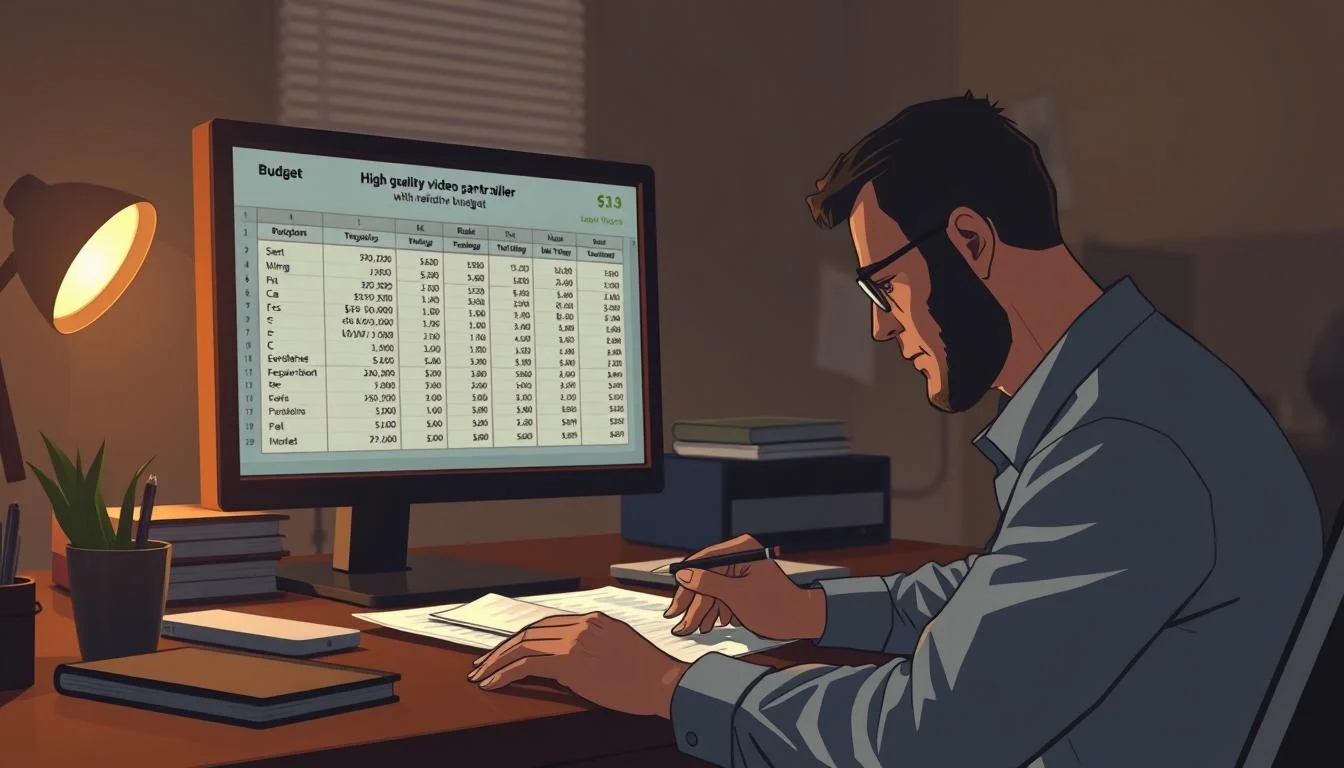
Allocating Resources Based on Marketing Goals
Your video game trailer budget should match your marketing plan. If your game’s art is amazing, spend more on visuals. If it’s the gameplay that shines, make sure to show it off well.
Divide your cost of making a game trailer into three parts: planning, making the trailer, and editing. Spend your money based on what’s most important to you.
Building in Contingency for Unexpected Costs
Even with the best plans, surprises can happen. Always add 15-20% to your budget for unexpected costs. This way, you can keep your trailer quality high even when things don’t go as planned.
Unexpected costs can include extra changes, tech problems, or sudden creative shifts. Without a contingency, these can ruin your project or make your trailer less impressive.
Think of your trailer as an investment in your game’s success. By seeing your budget as a tool, not a limit, you’ll make a trailer that really connects with your audience and meets your goals.
Cost-Saving Strategies That Don’t Compromise Quality
I’ve helped many game studios cut their trailer costs without losing quality. Making a great gaming trailer doesn’t mean spending a lot. With careful planning and smart use of resources, you can make something amazing without breaking the bank.
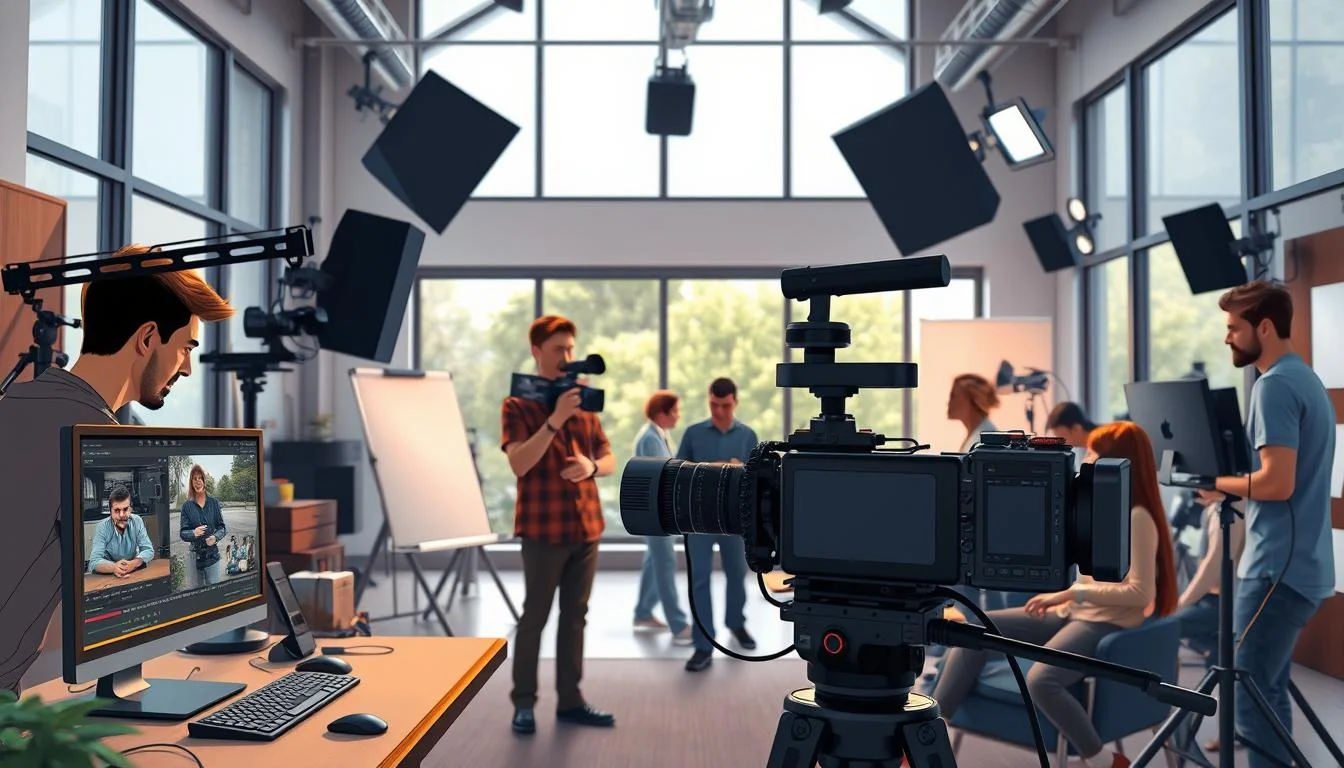
Leveraging Existing Game Assets
One of the best ways to save money is to use what you already have. Instead of making new things, use your existing characters, environments, and animations. This can save you thousands.
For games that are not yet finished, plan ahead. Make sure you have trailer-ready versions of important elements. Using high-quality gameplay footage as the base of your trailer can be a great start. Then, add professional editing and sound design to make it even better.
Streamlining the Revision Process
Revisions can often lead to extra costs in trailer production. Set up clear approval steps and focus feedback to avoid endless changes. Offer two revisions in the basic price, and charge extra for more.
This method helps get better feedback and saves time. A well-organized feedback process can cut post-production time by up to 40%.
Timing Your Production for Better Rates
Timing your trailer production right can also save you money. Many studios offer lower rates during slow periods, like January-March and August-September. Planning your trailer for these times can save 10-20%.
Also, giving enough notice can avoid rush fees. These can add 25-50% to your budget. Here’s a quick guide to saving money on your gaming trailer:
| Strategy | Potential Savings | Quality Impact | Implementation Difficulty |
|---|---|---|---|
| Using existing game assets | 30-50% | Minimal | Low |
| Structured revision process | 15-25% | None | Medium |
| Off-peak production timing | 10-20% | None | Low |
| Shorter trailer length | 20-30% | Can be positive | Low |
DIY vs. Professional Game Trailers: A Cost-Benefit Analysis
Choosing between DIY and professional game trailer production is a big decision. It depends on your budget, marketing goals, and what you want to achieve. I’ve looked into both options to help you decide what’s best for you.
Tools and Software for Creating Your Own Trailer
To make your own gaming trailer, you need the right software. Luckily, there are many tools at different prices:
- Video editing software – Adobe Premiere Pro ($20.99/month) or DaVinci Resolve (free version available)
- Screen capture tools – OBS (free) or Camtasia ($249.99) for recording gameplay footage
- Motion graphics – Adobe After Effects ($20.99/month) for creating dynamic visual elements
- Audio editing – Audacity (free) or Adobe Audition ($20.99/month) for sound mixing
The cost of software can range from $0 to $1,000. Many developers forget to include these costs when planning their trailer budget.
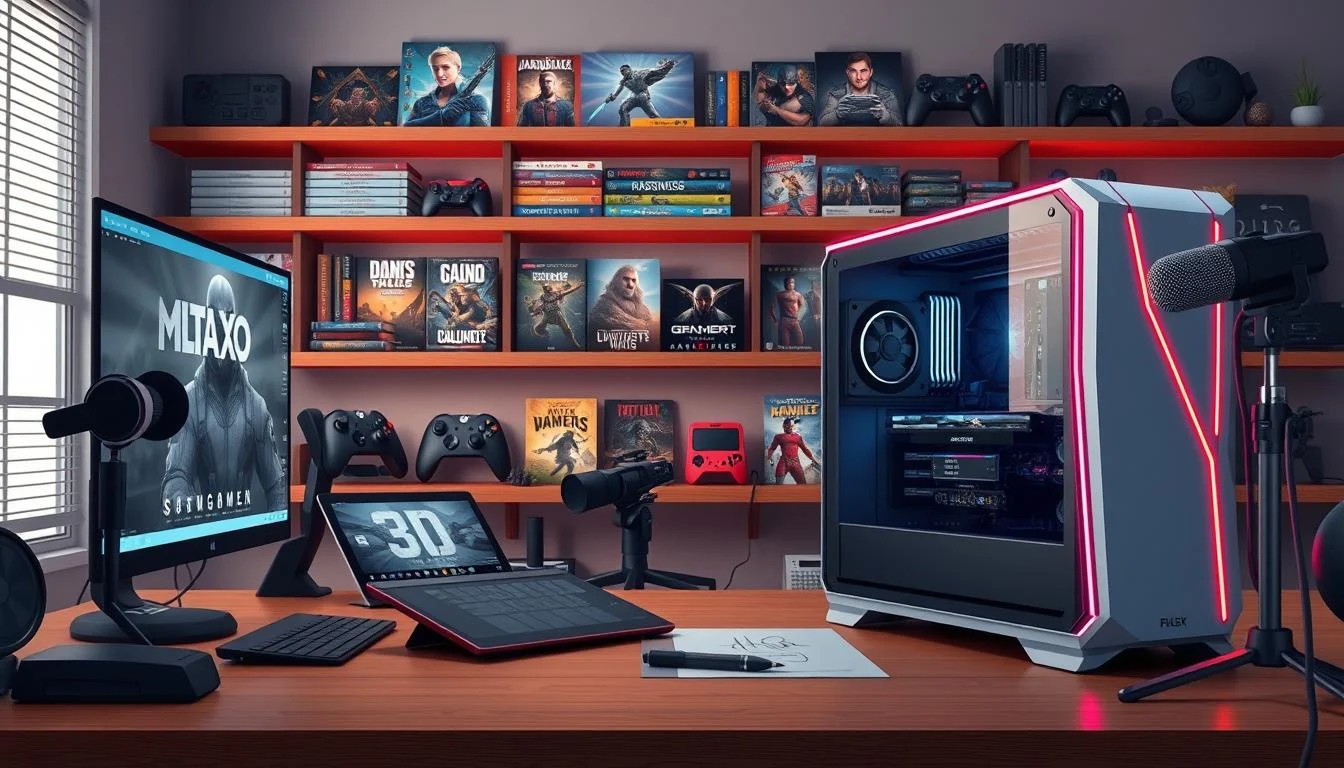
Skills Required for Effective DIY Production
Having the right tools isn’t enough. You also need certain skills for a great DIY trailer:
- Basic video editing techniques and workflow management
- Understanding of pacing, timing, and narrative structure
- Audio mixing and sound design knowledge
- Visual composition and cinematography basics
Learning these skills takes time. Many developers focus too much on visual effects and forget about storytelling.
When Professional Investment Makes Financial Sense
Professional trailer production is worth it in some cases:
- When your game is a big investment
- If you’re looking for publisher support or crowdfunding
- When you’re in a crowded market and first impressions count
- If your team lacks the skills or time needed
Professional trailers can cost between $5,000 and $50,000. But, they can increase your game’s visibility and market position. Working with experts can save you time and ensure your trailer meets your goals.
Combining DIY and professional trailers can be the best strategy. Use professionals for your launch trailer and make DIY updates. This way, you get the most out of your marketing budget.
🎥 Need to Pitch Your Game? This Trailer Designer Creates the Hype You Need to Sell Fast!
Regional Price Variations in Gaming Trailer Production
The cost of making a video game trailer varies worldwide. This knowledge can help you balance quality and budget. Let’s look at how location affects pricing and what choices you have.
U.S. Market Standard Rates
In the U.S., trailer production costs are high, mainly in big cities. Studios in Los Angeles and San Francisco charge the most. A mid-tier trailer costs $15,000-$25,000, and top ones start at $50,000.
New York and Boston offer slightly more competitive pricing but keep quality high. If budget is tight, consider the Midwest or South. Rates there are 15-30% lower than the coast.
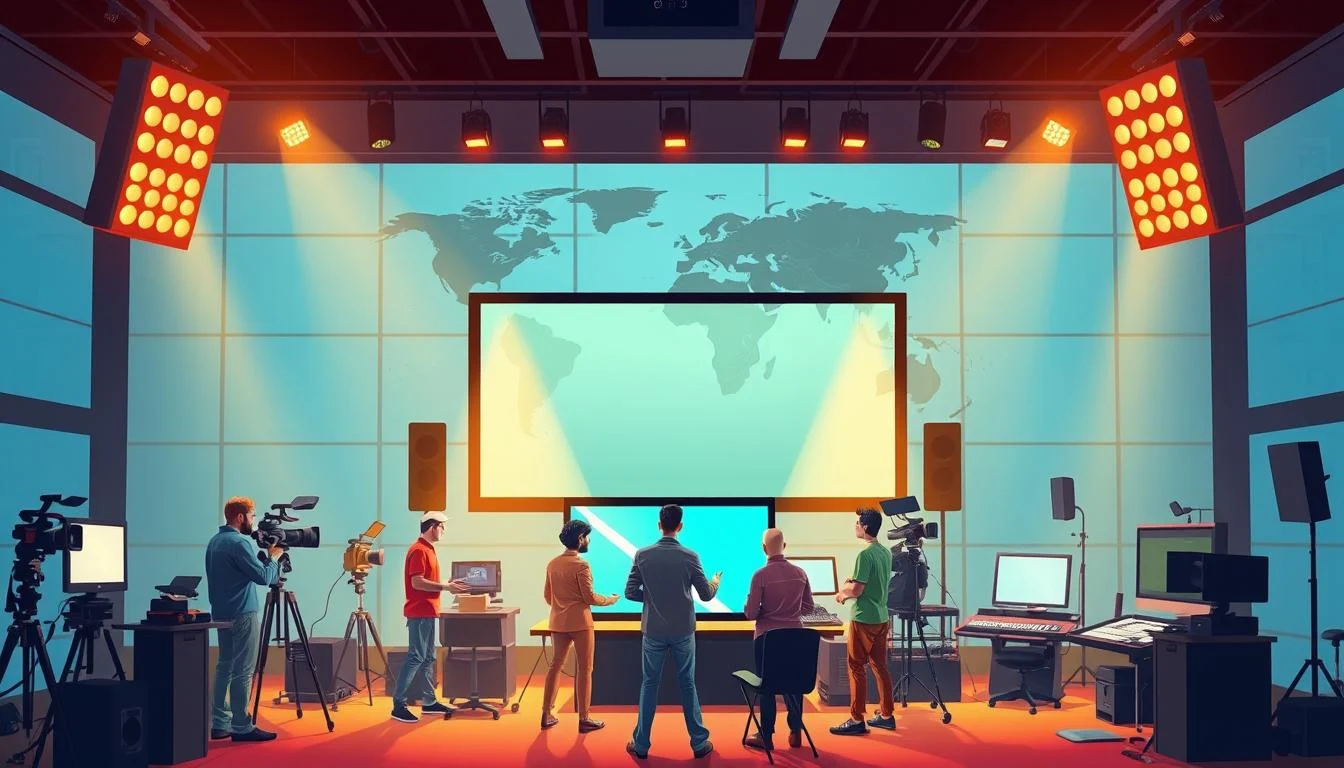
International Production Hubs and Cost Differences
Looking outside the U.S. can save a lot. Eastern Europe, like Poland and Ukraine, has great talent at 40-60% less than U.S. prices. Quality is similar.
In Southeast Asia, like Malaysia and Thailand, you can save even more—60-70% off U.S. rates. But, quality can vary, so check portfolios carefully.
| Region | Mid-Tier Trailer Cost | Quality Level | Communication Ease | Time Zone Challenges |
|---|---|---|---|---|
| U.S. West Coast | $15,000-$25,000 | Very High | Excellent | Low |
| U.S. East Coast | $12,000-$22,000 | Very High | Excellent | Low |
| Eastern Europe | $7,000-$15,000 | High | Good | Moderate |
| Southeast Asia | $5,000-$10,000 | Moderate to High | Variable | High |
Remote Collaboration Opportunities
The digital world has changed how we make trailers. Remote work is now a good option for saving money and getting quality. Cloud tools and video calls make working across time zones easy.
With remote work, you can pick the best team worldwide. You might choose a U.S. scriptwriter, Eastern European animators, and Southeast Asian sound designers. Success depends on clear communication and detailed plans from the start.
When choosing where to make your trailer, think about more than just cost. Consider communication, cultural fit, and portfolio quality. Sometimes, spending a bit more for better teamwork can save money by avoiding mistakes.
Timeline Considerations and Their Financial Impact
Managing time in gaming trailer production is key. It affects both cost and quality. Knowing how timelines work helps balance urgency and budget.
Standard Production Schedules
Professional gaming trailer production follows a set timeline. This allows for quality work without rushing. Timelines vary from 4-12 weeks, based on the trailer’s complexity and style.
A basic gameplay trailer with existing assets takes 4-6 weeks. More complex ones with custom animations or cinematic elements need 8-12 weeks or more.
The process has three main phases:
- Pre-production (1-2 weeks): Concept development, storyboarding, and planning
- Production (2-6 weeks): Asset creation, animation, and filming if needed
- Post-production (1-4 weeks): Editing, sound design, visual effects, and revisions
Knowing these timeframes is key when planning your release date. Developers with enough time for each phase usually get better trailers.
Rush Fees and Expedited Services
Expedited production is needed when deadlines are tight. But it comes with a cost. Rush fees can add 25-100% to your bill, depending on how fast you need it.
“In our industry, time equals quality. When clients need a trailer in half the standard time, we can deliver—but it requires twice the resources and coordination. That reality is reflected in our pricing structure.”
– Senior Producer at a leading game trailer agency
These extra costs come from:
- Overtime pay for artists, editors, and other team members
- Priority resource allocation, often pulling talent from other projects
- Additional staff or outsourcing to meet compressed deadlines
- Expedited review processes with less time for thoughtful revisions
Rushed production can lead to quality issues and mistakes. Without enough time, the final product may suffer. This can affect how well it engages viewers.
| Timeline Type | Duration | Cost Impact | Quality Risk | Best For |
|---|---|---|---|---|
| Standard | 4-12 weeks | Base rate | Low | Planned marketing campaigns |
| Moderately Rushed | 3-8 weeks | +25-50% | Medium | Adjusted launch dates |
| Severely Rushed | 2-4 weeks | +50-100% | High | Emergency marketing needs |
| Ultra Rush | 1-2 weeks | +100%+ | Very High | Crisis response only |
Planning Your Marketing Calendar Around Production
Integrating production timelines into your marketing strategy is cost-effective. Start trailer production 3-6 months before your game’s release date. This depends on your marketing campaign’s complexity.
This extended timeline allows for:
- Adequate time for production without rush fees
- Multiple revision rounds to perfect your messaging
- Localization for different markets if needed
- Coordination with other marketing activities
- Buffer time for unexpected development delays
For games with multiple trailer types, stagger production. This helps manage cash flow and team resources. I’ve seen developers plan their trailer production to match development milestones. This ensures each video showcases the game’s latest and best features.
Aligning your trailer production schedule with your marketing and development timelines avoids rush fees. This approach saves money and often results in higher quality trailers that meet your marketing goals.
Measuring ROI: Ensuring Your Trailer Investment Pays Off
Knowing if your gaming trailer is worth it means setting clear goals and tracking its success. After spending $1,000 to over $100,000, you want to see returns. I’ve helped many developers check if their trailer is working, starting with what success means for their game.
Setting Success Metrics for Your Trailer
Before making your trailer, decide what it should do. Different trailers have different jobs in your marketing plan. For announcement trailers, focus on:
- View count and reach metrics
- Press coverage and media mentions
- Social media engagement (shares, comments)
- Community growth indicators
Launch trailers should aim for different goals:
- Wishlist additions or pre-orders
- Website traffic spikes
- Direct sales attribution
- Cost per acquisition comparisons
The best trailers match their budget with clear goals, not just looking good.
Case Studies: High-Impact Trailers at Various Budget Levels
How much a trailer costs doesn’t always predict its success. I’ve seen cheap indie trailers beat expensive ones by focusing on their unique style. Here are some examples:
| Game | Trailer Budget | Key Success Factor | ROI Highlight | Marketing Impact |
|---|---|---|---|---|
| Hollow Knight | $8,000 | Distinctive art style showcase | 10x wishlist conversion rate | Critical acclaim amplification |
| Among Us | $3,000 | Clear social gameplay demonstration | Viral sharing metrics | Explosive community growth |
| Hades | $25,000 | Balanced gameplay/narrative focus | High press coverage ROI | Strong early access adoption |
| God of War | $500,000+ | Cinematic emotional storytelling | Pre-order conversion excellence | Brand reinforcement |
Balancing Cost Against Marketing Objectives
Your game’s strengths should guide your trailer budget. For example, a story-driven RPG might spend more on visuals, while a multiplayer game might focus on gameplay. This way, your trailer matches your game’s best features.
A trailer with 1 million views but few sales might not be as valuable as one with 100,000 views and lots of sales. It’s about knowing your marketing goals and measuring against them.
When looking at launch trailer costs, think about both short-term and long-term results. Some trailers keep selling months after launch, thanks to YouTube and community sharing. This can extend your ROI well past the launch date.
Conclusion
In this guide, we’ve looked at the many prices for video game trailers. Prices range from $1,000 for indie games to over $1 million for big AAA titles. This shows how different the needs for gaming trailers can be.
Your game’s first impression is very important. A great gaming trailer can grab people’s attention, build excitement, and help sell your game. It’s all about finding the right balance between cost and quality for your project.
When thinking about the cost of a gaming trailer, remember that investing wisely can pay off. The right trailer will speak to your audience and highlight what makes your game stand out.
Seeing your gaming trailer as an investment can help your game get more attention and engage players better. With good planning and the right partner, you can make a trailer that shows off your game’s best features without breaking the bank.
📈 Game Sales Start With the Right Trailer — Hire the Designer Who Gets It Right Every Time!
Frequently Asked Questions
Got more questions about “How Much Does a Gaming Trailer Cost?” I’m here to help! I’ve gathered some of the most common inquiries to provide you with quick and clear answers.
Q: How much does a mobile gaming trailer typically cost?
A: Mobile gaming trailers typically range from $30,000 to $100,000+, depending on size, customization, and included gaming systems. Basic models with standard gaming consoles and TVs start around $30,000-$50,000, while premium custom built trailers with high-end features like virtual reality stations, professional sound systems, and LED lighting can exceed $100,000. The price also varies based on whether you’re purchasing a turnkey mobile business that’s professionally built or converting a cargo trailer yourself.
Q: What features should I look for in a mobile gaming trailer?
A: When investing in a mobile gaming trailer, look for essential features like multiple gaming stations with quality TVs, popular gaming consoles (PlayStation, Nintendo Switch), a diverse game library, proper insulated walls for climate control, reliable power systems, and comfortable seating. Premium features that enhance the gaming experience include immersive sound systems with soundbars, custom LED lighting, virtual reality setups, retro arcade cabinets, and exterior customization with professional decals. The best game trailers also include extended tongues for generators and thoughtful interior gaming layouts that maximize space.
Q: Is a mobile gaming business profitable?
A: Yes, a mobile gaming business can be quite profitable with proper management. Most operators charge $250-$400 per hour for events, with average bookings lasting 2-3 hours. Many successful mobile gaming truck owners report breaking even within 1-2 years. The business model is scalable – you can expand by adding more trailers or offering additional services. Key to profitability is targeting birthday parties, corporate events, school functions, and community gatherings. Operating costs include vehicle maintenance, fuel, game updates, insurance, and marketing, typically ranging from $1,000-$2,500 monthly depending on booking frequency.
Q: What’s the difference between a mobile gaming trailer and a gaming truck?
A: The main difference between a mobile gaming trailer and a gaming truck is the transportation method. A mobile gaming trailer requires a separate vehicle (typically a truck or SUV) to tow it to locations, while a gaming truck is self-contained with the gaming area built directly into a large vehicle like a step van or bus. Gaming trucks generally cost more upfront ($75,000-$150,000) but may provide easier setup at events. Mobile gaming trailers usually offer more interior space for gaming stations and are often less expensive to purchase and maintain. Both options can deliver the ultimate gaming experience; the choice depends on your budget, transportation preferences, and business model.
Q: How many TVs and gaming consoles should a mobile video game trailer include?
A: A standard mobile video gaming trailer typically includes 6-10 gaming stations with TVs ranging from 32″ to 55″ in size. Most successful trailers feature a combination of gaming consoles to appeal to different gamers, including PlayStation, Xbox, and Nintendo Switch systems. For maximum versatility, include at least 4-6 different gaming consoles. High-end trailers may also incorporate gaming PCs and virtual reality stations. The ideal setup allows for both individual play and multiplayer tournaments, with consideration for different age groups and gaming preferences. Remember that more TVs and consoles increase your initial investment but also enhance the capacity and appeal of your mobile gaming business.
Q: What are the ongoing costs of operating a mobile gaming trailer business?
A: Ongoing costs for a mobile gaming trailer business include vehicle maintenance ($1,500-$3,000 annually), fuel ($200-$500 monthly depending on booking frequency), game purchases ($50-$70 per new title), console updates and replacements ($500-$2,000 annually), insurance ($1,200-$2,400 annually), marketing ($300-$1,000 monthly), business licenses ($100-$500 annually), and utilities like internet hotspots ($50-$100 monthly). Additionally, plan for equipment repairs, staff wages if you hire operators, and depreciation costs. To ensure profitability, these ongoing expenses should be factored into your hourly rates, which typically range from $250-$400 per hour for most mobile gaming businesses.
Q: Are there any mobile gaming trailer manufacturers that offer turnkey solutions?
A: Yes, several companies specialize in building professionally built, turnkey mobile gaming trailers. Companies like Rockin’ Rollin’ Video Games, Game Truck, Mobile Gaming Revolution, and Ultimate Mobile Gaming offer customized gaming trailers ready for business operation. These turnkey solutions typically include the fully equipped trailer with gaming stations, TVs, gaming consoles, sound systems, LED lighting, exterior wraps with professional decals, and sometimes initial marketing materials. Prices for these turnkey mobile solutions range from $50,000 to $120,000 depending on size and features. Many manufacturers also offer financing options, training programs, and ongoing support to help new business owners succeed in the mobile entertainment industry.
Q: How can I customize my mobile gaming trailer to stand out from competitors?
A: To make your mobile gaming trailer stand out, consider these customization options: Create a distinctive exterior with professional decal wraps featuring vibrant graphics and your unique branding. Implement themed interior gaming spaces with custom LED lighting that can change colors for different atmospheres. Install premium sound systems with multiple soundbars for immersive gaming experiences. Offer specialized gaming options like virtual reality stations or retro arcade cabinets that competitors might not have.
Customize your game library with both popular titles and unique indie games. Consider adding outside gaming capabilities with weatherproof TVs for larger events. Focus on comfort with premium seating and climate control through properly insulated walls. These customizations help create the ultimate mobile entertainment unit that will attract more clients and command premium pricing.
Q: What kind of revenue can I expect from a mobile video gaming trailer business?
A: A successful mobile video gaming trailer business can generate $5,000-$15,000+ in monthly revenue once established. Most operators charge $250-$400 per hour with 2-3 hour minimum bookings. Weekend warriors booking primarily Friday-Sunday can expect 3-6 events weekly, while full-time operators may book 8-12+ events weekly including weekday corporate events and school functions. Birthday parties remain the primary revenue source, but diversifying into corporate team building, school rewards, community events, and gaming tournaments can maximize earning potential. Seasonal fluctuations are common, with busier periods during school breaks and summer months. The most successful mobile gaming businesses enhance revenue by offering add-ons like extended hours, special gaming packages, merchandise sales, and food/drink options where permitted.
Q: What type of cargo trailer is best for converting into a mobile gaming trailer?
A: For converting into a mobile gaming trailer, a 16′ to 24′ enclosed cargo trailer with at least 7′ interior height works best. Look for trailers with extended tongue for generator placement, tandem axles for stability, and proper weight ratings (typically 7,000-10,000 GVWR) to support gaming equipment and passengers. Features like rear ramp doors or double doors facilitate easier access, while side doors provide emergency exits. Choose trailers with insulated walls for temperature control and noise reduction. Premium options include pre-wired electrical systems, reinforced flooring, and aluminum construction for reduced weight and maintenance. New cargo trailers suitable for conversion range from $7,000-$15,000, but used options can start around $3,000-$5,000 if you’re on a tight budget for your mobile business.
Related Articles:
- Understanding the Goal of Industrial Product Design in Modern Design
- Guide to 3D Character Modeling: Create Your Character Model from Scratch
- Game Art vs Game Design: Understanding the Key Differences Explained
- Twitch Stream Overlays & Graphics Templates: Elevate Your Streaming Game
- Custom Trade Show Booth Design & Displays | Innovative Booth Solutions
This post contains affiliate links, which means I may earn a commission if you make a purchase through these links. There is no additional charge to you! Thank you for supporting my blog so I can continue creating free content each week!

